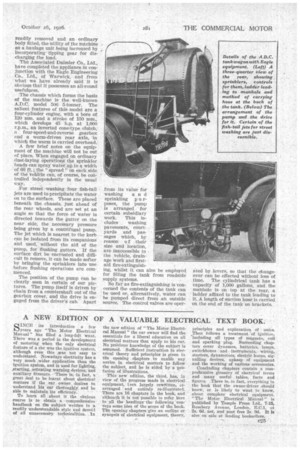ONE VEHICLE FOR SEVERAL MUNICIPAL USES.
Page 46

Page 47

If you've noticed an error in this article please click here to report it so we can fix it.
An A.D.C. Appliance, with Eagle Equipment, which Possesses a Wide Range of Usefulness.
THERE are several classes of work undertaken by municipal authorities which time has proved can be most efficiently and economically performed by motor vehicle or appliance, but which do not, however, offer full-time employment for such a machine. If, therefore, it is possible to co-ordinate the limited work available in several directions and to arrange for it to be carried out by the one machine, then it is certain that the cost of operating the vehicle and the costs for performing the respective tasks will be much , lower than would othemise be the ease—this, always providing the machine can be quickly adapted or, converted for performing a variety of operations.
For instance, in the case of a watering wagon there is no reason, if suitable equipment is embodied in the design, why the machine should not be used for such work as street washing, gutter cleansing, gully flushing, dust laying and, in emergency, for fire-extinguishing purposes. As proof of Ais assertion we can refer our readers to the special A.D.C. municipal appliance illustrated on this page, which has recently been supplied to the Lambeth Borough Council by the Associated Daimler Co., Ltd., Walthamstow, London, E.17, for this machine has been so constructed that it can perform one and all of these operations. Furthermore, the tank which is normally employed for such work can be readily removed and an ordinary body fitted, the utility of the machine as a haulage unit being increased by incorporating tipping gear for discharging the load.
The Associated Daimler Co., Ltd., have completed the appliance in conjunction with the Eagle Engineering Co., Ltd., of Warwick, and from what we have already said it is Obvious that it possesses an all-round usefulness.
The chassis which forms the basis of the machine is the well-known A.D.C. model 506 5-tonner. The salient features of this model are a four-cylinder engine, with a bore of 120 ram. and a stroke of 150 mm. which develops 45 hp. at 1,000 r.p.m., an inverted cone-type clutch, a four-speed-and-reverse gearbox and a worm-driven rear axle, in which the worm is carried overhead.
A few brief notes on the equipment of the machine will not be out of place. When engaged on ordinary dust-laying operations' the sprinkler heads can spray water.%) to a width of 60 ft.; the " spread " on each side of the vehicle can, of course, be controlled independently in the usual way. For street washing four fish-tail jets are used to precipitate the water on to the surface. These are placed beneath the chassis, just ahead of the rear wheels, and are set at an angle so that the force of water is directed towards the gutter on the near side, the necessary pressure being given by a centrifugal pump. The jet which is nearest to the kerb can be isolated from its companions and used,. without the aid of the pump, for flushing gutters. If the surface dirt be encrusted and difficult to remove, it can be made softer by bringing the sprinklers into use before flushing operations are commenced.
The position of the pump can be clearly seen in certain of our pictures. The pump itself is driven by chain from a countershaft out of the gearbox cover, and the drive is engaged from the driver's cab. Apart from its value for washing a n d sprinkling p u rposes, the pump is arranged for certain subsidiary work. This includes washing pavements, courtyards and passages which, by reason of their size and location, are inaccessible to the vehicle, drainage work and firstaid fire-extinguish ing, whilst it can also be employed for filling the tank from roadside supply systems.
So far as fire-extinguishing is 'concerned the contents of the tank can be used or, alternatively, water can be pumped direct from an outside source. The control valves are oper
ated by levers, so that the obangeover can be effected without loss of time. The cylindrical tank has a capacity of 1,000 gallons, and the manhole is on top at the rear, a ladder affixed to the tank leading to it.. A. length of suction hose is carried on the end of the tank on brackets.




































































































